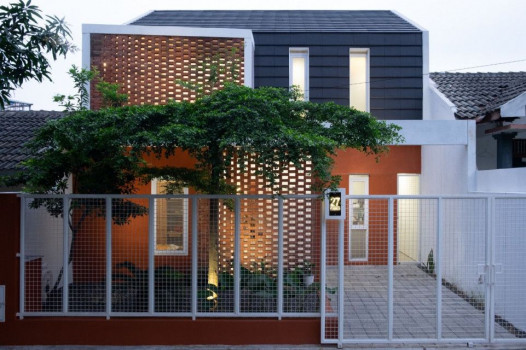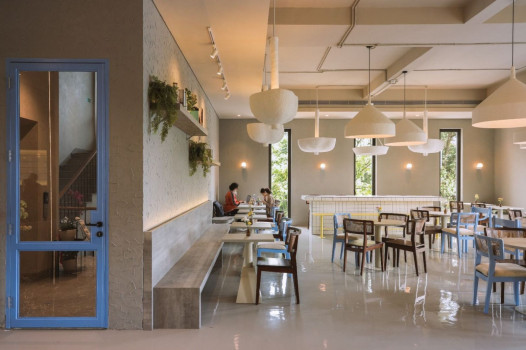Opinion: The value of Print



The unearthing of a single personal letter in the early 1980s was powerful enough to destabilise one of the foundations of Western conceptual art history, reminding us again of the power of printed media to subvert or revise established canons.
The letter was written in 1917 by art hero Marcel Duchamp to his sister Suzanne, effectively telling her that he was not the author of the most recognised piece of conceptual sculpture in the Western world;
“One of my female friends under a masculine pseudonym, Richard Mutt, sent in a porcelain urinal as a sculpture.”2
My mind was blown when I learned that Fountain (1917), a porcelain urinal readymade, may have been made instead by Duchamp’s friend, Dada artist Baroness Elsa von Freytag-Loringhoven.3 While this in no way undermines the genius of his full body of work, it illustrates how facts of history are in constant flux, and how important the contributions of historians and researchers are in reshaping our identities and knowledge base.
Print media has always defined the way we store architectural as well as art histories, whether via books, academic journals, magazines, newspapers or personal letters. Simple newspaper clippings have also revised New Zealand architectural histories, for example, the recent unearthing of several precious pieces of information by architectural and social historian Elizabeth Cox, allowing her to weave several additional women into our history. Her recent finding of a classified advertisement from a Dunedin newspaper from 1927 has established Lucy Greenish (1888–1976) as the first woman to set up an architectural practice in New Zealand, previously thought to be Muriel Lamb in the 1950s.4
The importance of print media cannot be underestimated for more reasons than maintaining and shaping constantly shifting histories – it is also especially important for doing the same for contemporary discussions and records. This is proving tough in an economic environment that has decimated print media and the wider journalism industry.
This year, several architecture magazines such as Home, Houses, Urbis and Interior have been discontinued and, while some magazines are rumoured to be emerging from the dust, you will all be aware that the print version of [Architecture NZ] is also under threat. When combined with the loss of the specialist Architecture Library at the University of Auckland in 2019, the broader sense is of a dissolving knowledge base, with information running through fingers like sand.
We now mainly consume words via an online platform (which, for all of its advantages, does not tend to record fixed snapshots in time) and the final nail for media organisations has been the economic effects of the COVID-19 shutdowns. But, structures of journalism and publication will adapt and change to suit constantly updating technologies and cyclic economies, just as the music industry has. There are many for whom their surviving or new vinyl collections sit easily alongside Spotify.
As things develop, it is important to keep an eye out for potholes in the online world and, hopefully, fill them. While the constant updating of online information sources is its absolute power (no more out-of-date product data brochures), it comes with its own set of issues that need addressing, such as the rapid loss of information.
An example of instantaneous loss became apparent to me recently, through a search of initial registration years for architects on the NZRAB website. I found that once an architect retires, their name is removed from public or member access completely. It seems incredible to me that after possibly five or six decades of existing on record, a name can disappear in an instant from a valued institutional database. The idea that future researchers cannot easily find the years of registration for architects such as Rewi Thompson, Ian Athfield or Lillian Chrystall seems like an opportunity overlooked.5
Finding this information online is currently difficult, and we are reliant on the list of NZIA practices published in [Architecture NZ] and its former equivalents, New Zealand Architect and NZ Home and Building.6 Reliance on the print version of this magazine extends across many areas of our record-keeping, and its loss now would leave large potholes indeed.7
Most online archiving systems themselves are in constant flux,8 again introducing (often unseen) possibilities for instantaneous loss of valuable information.
Alongside our developing digital storehouses, print media has an important place in the shaping of our architectural canon, and I hope that architectural magazines such as [Architecture NZ] survive the current conditions. I also hope that many small, seemingly insignificant snippets of printed information survive from this era to cause major disruptions to the world view of future generations, just as the effect of Duchamp’s letter to his sister had on me.
When considering the idea that the July/August issue of Architecture NZ may be the last in printed format, I was prompted to include a student drawing of my own. This life drawing, created with an ink bottle directly from the nozzle and within a 30-second time-limit, survives due to the personal archiving system of Sarah Treadwell. The drawing surfaced during research for the centenary celebrations of the Auckland School, and is included in the publication The Auckland School: 100 Years of Architecture and Planning (The University of Auckland, 2017), co-edited by Julia Gatley and Lucy Treep. It is now held in the Architecture Archive at the University of Auckland Library.
I am grateful for these archiving systems as, without them, this drawing would have been lost over the decades, like most of my other student work. Life drawing classes formed part of the Drawing course led by Kerry Morrow in the 1980s at the University of Auckland School of Architecture.
Footnotes
1 ‘In 2004 it was voted the most influential modern artwork of all time.’ theguardian.com/books/2019/mar/29/marcel-duchamp-fountain-women-art-history
2 Francis M. Naumann, ‘Affectueusement, Marcel: Ten Letters from Marcel Duchamp to Suzanne Duchamp and Jean Crotti’, Archives of American Art Journal, Vol. 22, No. 4 (1982), p 8, The University of Chicago Press
3 There are others identified to date as the possible ‘female friend’ in the letter, such as Louise Norton, contributor to Dada magazine The Blind Man. A strong case has been made that it is Baroness Elsa von Freytag-Loringhoven by several researchers. Higgs, J. Stranger Than We Can Imagine: Making Sense of the Twentieth Century (Weidenfeld & Nicolson, 2016). Note that Fountain remains officially the work of Duchamp, and replicas were produced from 1950–1964 for major galleries around the world.
4 architecturewomen.org.nz/news-events/early-women-nz-architecture-elizabeth-cox-lecture-series
5 The NZRAB has advised that the Board made its decision not to show online the list of former architects. Items 19 and 21 of the Registered Architects Act 2005 seem to indicate that such information should be available to members of the public.
6 NZ Home and Building, launched in 1936, was published by Associated Group Media (AGM), ‘under the auspices of the NZIA’, until its sale to ACP in 1994. New Zealand Architect was discontinued in 1987 and replaced by Architecture NZ. The NZIA removed its insignia from the latter in 2017, when AGM Publishing sold its assets to BCI.
7 Another example is the list of NZIA Local and National Awards prior to 2009. There is a publicly accessible Digital Archive Project planned by the NZIA – at both national level and led by the Wellington branch. At present, the most reliable resource for researchers for the NZIA Awards is the printed summary published annually in Architecture NZ.
8 For example, the move to (free) open-source software to navigate paywall structures, especially by universities, through initiatives such as the Public Knowledge Project. pkp.sfu.ca/2015/07/01/pkp-launches-new-open-access-publishing-cooperative-study/




 Australia
Australia
 New Zealand
New Zealand
 Philippines
Philippines
 Hongkong
Hongkong
 Singapore
Singapore
 Malaysia
Malaysia








